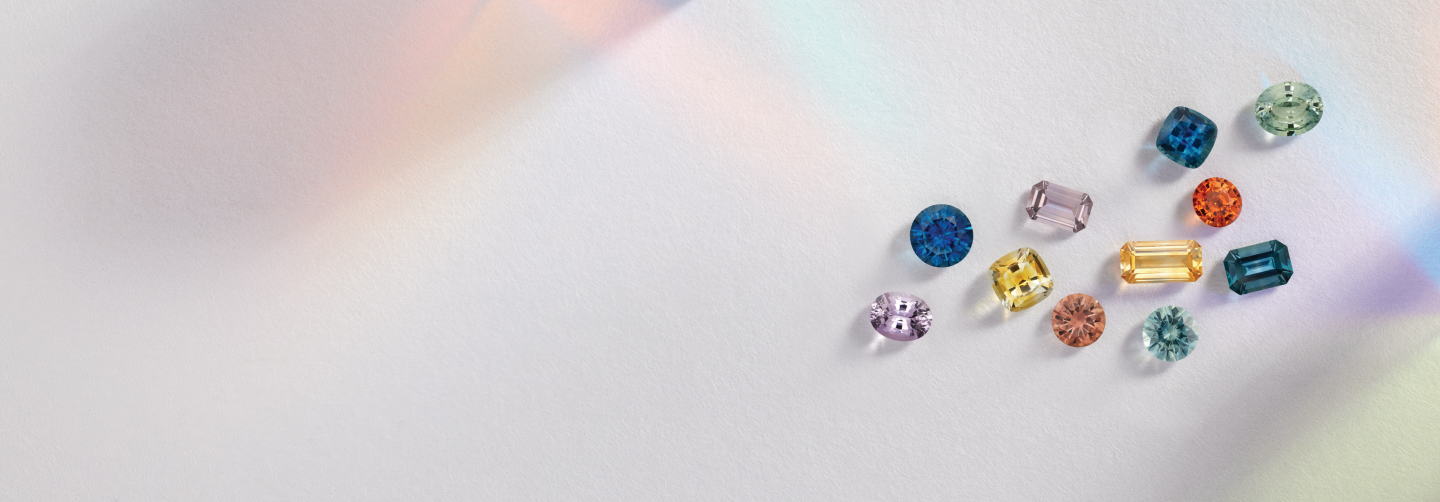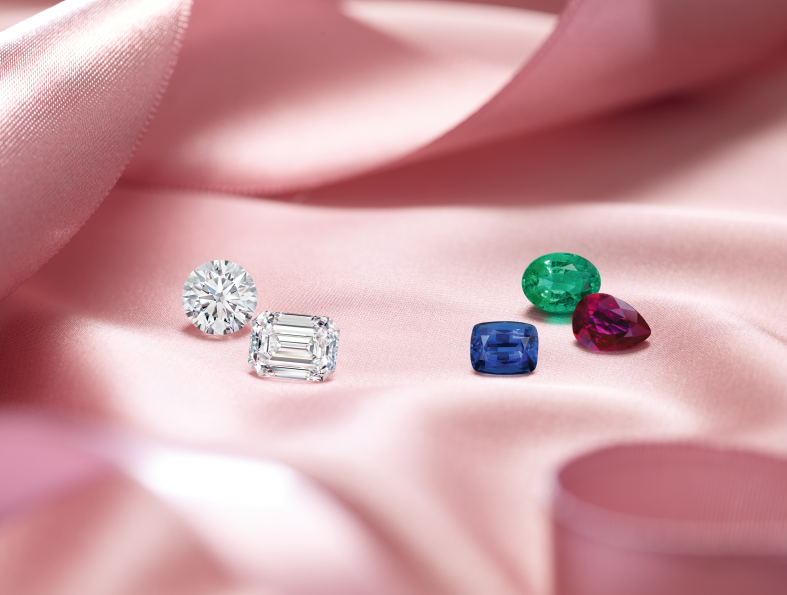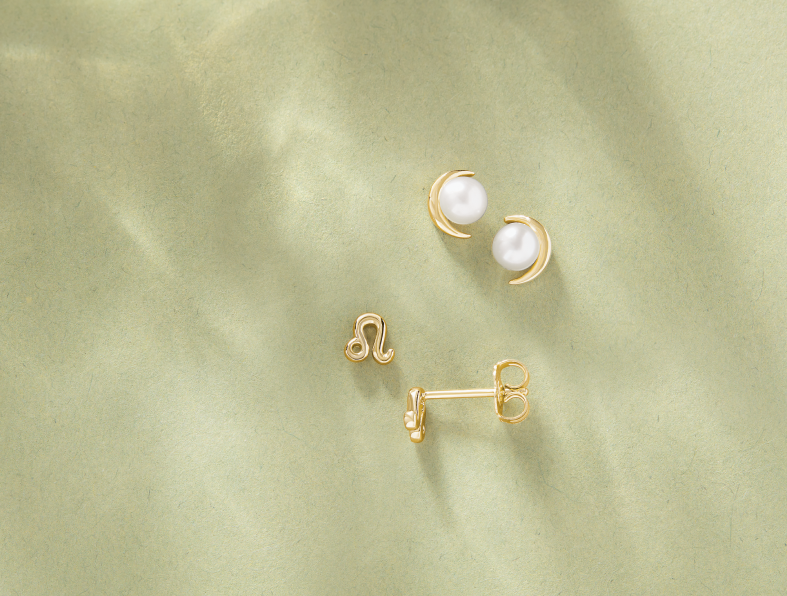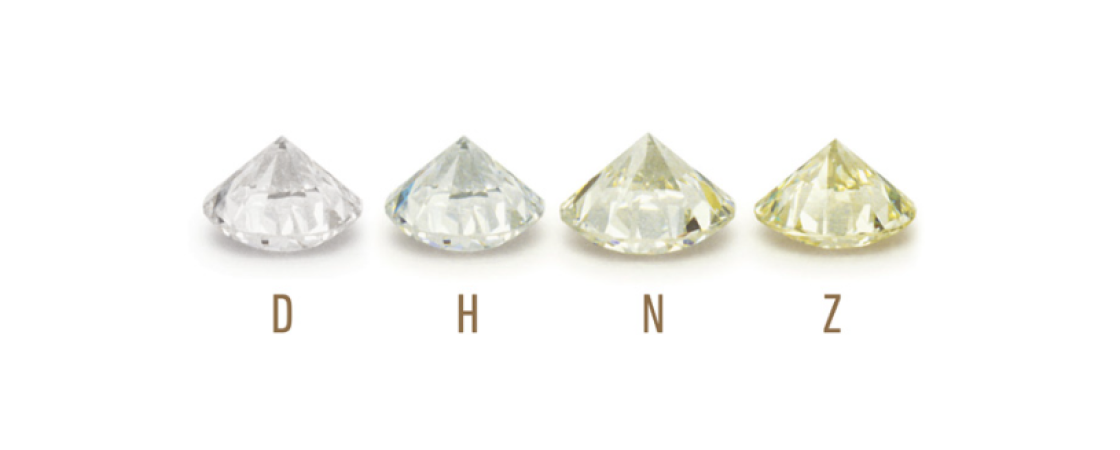
Diamond Education

Diamond Quality Guide: The 4 C's Explained
Diamonds are evaluated globally based on the universally accepted standards known as the 4 C's: Carat, Cut, Color, and Clarity. Our guide aims to clarify these concepts, aiding you in selecting the perfect diamond.

Comprehensive Guide to Diamonds
Lab Grown Diamonds are graded no differently than Earth Created Diamonds, because chemically and physically they are the same. In the realm of lab-grown diamonds, quality is assessed globally based on the well-established criteria known as the 4 C's: Carat, Cut, Color, and Clarity. Our goal is to demystify these terms for you, ensuring you make an informed choice when selecting your ideal lab-grown diamond.

The Importance of Diamond Cut
The cut is crucial in defining a diamond's beauty, encompassing the gem's proportions, polish, and symmetry. These factors affect its brilliance, fire, and scintillation. A well-cut diamond exhibits maximum sparkle and reflects light beautifully, whereas a poorly cut diamond looks dull and lifeless. The cut has the most significant impact on a diamond's visual appeal.

Diamond Color Explained
Diamond color grading actually focuses on the lack of color, with the goal being to determine how colorless a diamond is. The subtle variations in color are often not noticeable to the untrained eye but significantly impact the diamond's value. True colorlessness is rare, and any tint in a white diamond reduces its desirability. Diamonds are assessed on a scale from D to Z by the GIA, where D represents a completely colorless diamond and is the most valuable, with the scale moving towards Z indicating increasing presence of color.

The Importance of Diamond Cut
The cut is crucial in defining a diamond's beauty, encompassing the gem's proportions, polish, and symmetry. These factors affect its brilliance, fire, and scintillation. A well-cut diamond exhibits maximum sparkle and reflects light beautifully, whereas a poorly cut diamond looks dull and lifeless. The cut has the most significant impact on a diamond's visual appeal.

Choosing the Right Diamond Color
Navigating the subtleties between colorless and near-colorless diamonds may seem daunting, especially considering the notable price differences across color grades. For those who prioritize purity, diamonds within the D-F color range are highly sought after. However, opting for diamonds in the G-I range offers substantial value, maintaining a colorless appearance at a more accessible price point.
Diamond Cut Scale

- Excellent: Maximizes brilliance with perfect proportions.- Very Good: Highly reflective with well-executed facets.
- Good: Reflects most light, though proportions may be slightly off.
- Fair: Some light escapes, making the diamond's smaller size less noticeable.- Poor: Dull appearance, due to disproportionate cutting, affecting reflectiveness.
Understanding the cut and the other C's is key to choosing a diamond that meets both your aesthetic and value expectations.
Diamond Cut Scale

The epitome of colorlessness, making it exceedingly rare and the top color grade.
- E: Only minute color traces detectable by only the most skilled gemologists, making it a coveted rarity.
- F: Slight color traces visible to an expert's eye, yet falls under the "colorless" category, signifying a premium diamond.
- G-H: Minor color observable against higher grade diamonds; these offer great value for their near-colorless appearance.
- I-J-K-L: Color becomes perceptible, presenting outstanding value, particularly suited for settings in yellow gold.
- M-N: Exhibits a faint yellow hue, marking a noticeable drop in colorlessness.
- O-Z: The presence of yellow is evident, indicating a lower grade in terms of color.
ANOR’s Guide to Diamond Clarity: Understanding the Essentials
When it comes to choosing a diamond, clarity is a key factor that signifies the presence of natural characteristics, known as inclusions and blemishes. These features, much like a fingerprint, make each diamond unique. At ANOR, we simplify the process of selecting the right clarity for your diamond, balancing between natural beauty and value.

Clarity Categories Explained:
- FL (Flawless): Exceptionally rare, these diamonds have no visible inclusions or blemishes under 10x magnification, representing the pinnacle of purity.
- IF (Internally Flawless): Nearly perfect, these gems may have some minor surface blemishes but no internal flaws, making them highly sought after.
- VVS1/VVS2 (Very Very Slightly Included): With inclusions so slight they're difficult to detect even under magnification, these diamonds are almost as perfect as flawless ones.
- VS1/VS2 (Very Slightly Included): These diamonds have minor inclusions that are not visible to the naked eye, offering a beautiful appearance at a more accessible price point.
- SI1/SI2 (Slightly Included): Inclusions are more noticeable under magnification but can still offer a clean appearance to the untrained eye, especially in smaller sizes.
- I1, I2, I3 (Included): These diamonds show visible inclusions, which may affect the stone’s brilliance and clarity, yet they can be a budget-friendly option for many.
Choosing Your ANOR Diamond:
Selecting the right clarity level involves balancing your preferences for purity with your budget. For those desiring near-perfect diamonds without the premium price, VVS1/VVS2 diamonds are an excellent choice. If you prefer a diamond that appears clean to the naked eye, VS1 or VS2 grades offer a good compromise between quality and cost. For individuals looking to maximize their investment or prefer a larger diamond within a certain budget, SI1 or SI2 grades may be more suitable. It’s important to note that as diamond size increases, inclusions become more visible.
At ANOR, we’re committed to helping you find the diamond that aligns with both your aesthetic preferences and budgetary needs, ensuring a choice you’ll be happy with for years to come.

Understanding Diamond Carat with ANOR
At ANOR, we know that the allure of a diamond isn't just in its sparkle but also in its weight, measured in carats (ct). A carat, equating to 0.2 grams—about the heft of a paper clip—might seem small, but it holds immense significance in the world of diamonds. It's crucial to distinguish carat weight from "karat," a term that describes the purity of gold, as the two are unrelated.The carat of a diamond does give a general idea of its size. For instance, a 1 ct round brilliant cut diamond typically measures about 6.4 mm in diameter. However, carat weight doesn't directly translate to size in a straightforward manner, especially when comparing diamonds of different shapes. This means a 1 ct diamond in one shape might appear larger or smaller than a 1 ct diamond in another shape due to differences in cut and proportions.
Price-wise, ANOR emphasizes that as the carat weight increases, so does the rarity—and consequently, the price—of the diamond, but not in a linear fashion. A 2-carat diamond of a certain quality could cost more than double that of a 1-carat diamond with similar characteristics because of its rarity.Moreover, the relationship between a diamond's size in millimeters and its weight in carats varies by shape, directly impacting its appearance and value. At ANOR, we provide insights and guidance to help you navigate these nuances, ensuring you choose a diamond that meets your expectations in terms of both size and value.
